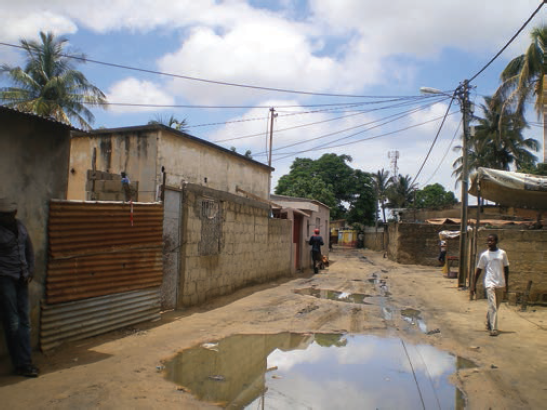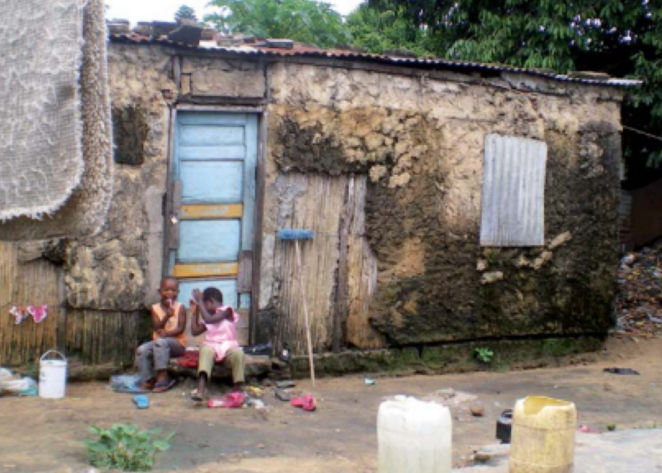Case-study /
FRACTAL learning – Adaptation Inspiration Theme Module 2

Please note this case is part of the FRACTAL training theme on Adaptation Inspiration conducted in 2018. The training was informed by cases collated from FRACTAL project partners as examples of good practice in urban adaptation in Africa. The cases cover a range of approaches to adaptation and urban challenges to a range of climate hazards and other stressors. Solutions also address several of the UN’s Sustainable Development Goals.
The case is one of 17 reported on in the Inspiring Adaptation in African Cities Working paper – a product of the FRACTAL project. Use the article to find further inspiring cases.
Public, Private, People Partnerships for Climate Compatible Development, Maputo
Key points:
- Partnerships are a key strategy to build networks that can address climate change risks and initiate interventions for the sustainable use of resources. Partnerships emerge when actors with apparently different interests identify a common objective and work together towards achieving it.
- The planning approach, which gave communities a forum in which they could present their plans to a wider audience, created a shift away from passive participation in neighbourhood planning to active leadership and mediation.
- Participatory planning approaches have the potential to develop institutions for climate change governance at the local level and to establish channels of communication among different stakeholders from government, business and civil society.
Introduction
Local knowledge and capacity need to be recognised by local government and formal institutions. Communities may benefit from the enabling role that formal organisations play, by supporting their networks, facilitating access to knowledge and resources, and legitimising their actions.
The project developed a participatory planning method to foster partnerships between public, private and civil actors. These partnerships tackled climate change through actions in the informal settlements of Chamanculo C in Maputo, Mozambique, while addressing the concerns of local citizens. The approach recognised the capacity of local citizens to develop a vision for the future of their neighbourhood in a changing climate.
The other modules in this Adaptation Inspiration theme training can be accessed here:
- Module 1: Introduction to the Adaptation Inspiration theme training
- Module 2: Maputo, Mozambique: Private-Public-People networks for climate compatible development addressing adaptation and disaster risk
- Module 3: Cape Town, South Africa: An integrated approach to river catchment management
- Module 4: Lesotho: Tackling water insecurity: an assessment of future national water management developed as part of the 2016 Lesotho Water Security and Climate Change Assessment.
- Module 5: Lusaka, Zambia: Building disaster risk reduction and emergency response to flooding
- Module 6: Summary of FRACTAL training on Adaptation Inspiration
Climate risks and other stressors
The coastal location of Maputo makes it vulnerable to severe climate-related risks, such as flooding, cyclones and sea level rise. Flooding, in particular, constitutes a severe threat to Maputo’s bairros (administrative subdivisions in urban districts). Water covers roads and properties, and the insufficient drainage systems, often blocked by uncontrolled waste, prolong the impact of floods.
There are serious negative impacts on residents and heightened environmental risks are compounded by high vulnerabilities to these risks (UNFCCC, 2014). Vulnerability to the adverse effects of climate change therefore became a focal issue for local residents.
Adaptation approach
The focus is on bringing together municipal and national government institutions and actions involved in tackling climate change, along with citizens, to jointly build strategies for climate resilience that benefit urban poor communities.
- A methodology called Participatory Action Plan Development was used. Expert climate analyses was introduced and made accessible to enhance the community’s contextual understanding of vulnerability factors. The co-production of knowledge helped develop potential courses of action in a joint process, linking Maputo’s community development with that of local climate change-related priorities.
- 4PCCD aimed to provide a platform for partnership-building for long-term collaboration between the various stakeholders involved in the project. The National Fund for the Environment of Mozambique, teamed up with UK Universities to devise a participatory planning project that could build relationships between key stakeholders. Actor mapping was used to understand the key players* who were delivering climate change interventions in Chamanculo C and Maputo.
- A Community Plan for Climate Change Adaptation was developed. The project facilitators provided checkpoints but the communities developed proposals, wrote the plan, presented it to other actors and made follow-up approaches to institutions for further support. This was done through a Climate Planning Committee, established to represent the Chamanculo C community.
Links to SDGs

Partnerships between different institutions including governments, private sector and civil-society organisations are crucial for sustainable development in Maputo (SDG 17). Likewise, a well-designed and efficient city infrastructure is integral to ensure resilient communities, cities and urban areas (SDG 11, 13). Waste collection and recycling as well as water provision are key to maintaining good health and well-being and providing clean water and sanitation in urban areas (SDG 3, 6).
Climate information
Information from downscaled Global Circulation models was analysed from the UNDP Climate Change Country Profiles for Mozambique plus a city analysis by the National Disaster Management Institute (Instituto Nacional de Gestão de Calamidades, INGC) (McKinsey et al., 2012). Expert consultations complemented the information (see Castan Broto et al., 2015 for more information).
Uncertainties and gaps in information were conveyed to the community, and the climate information was related to specific impacts at the local scale and analysed with the community’s previous experiences of cyclones and flooding in Maputo.
Challenges
The future challenge for both the National Fund for the Environment of Mozambique and local residents will be to implement project proposals. Additionally, the development of large-scale participatory planning processes for climate compatible development is resource and time-consuming. It requires the buy-in of the residents; their belief that the process will contribute to the improvement of their city and neighbourhood, and their certainty that their visions for the city’s future will be recognised and considered by city managers.
Their remains a preoccupation with how citizens can engage effectively in ongoing processes of urban governance. An NGO representative explained that while public participation was “very important because you have to know what the person who lives the problem thinks, “existing mechanisms for people to be heard… in newspapers or television… exclude a large majority of the population”. Municipal representatives recognise that “plans are made for people, so they cannot be done in offices, they have to be done with and for people, regarding the implementation of the plans, the private sector has to be called to participate” (interviewee from the municipality) (Bronto et al., 2015).
Benefits

Participatory planning offers methods to unpack the community’s vulnerabilities and empower them to achieve both representation and recognition of their concerns and hidden capacities.
With a small amount of external support for facilitation and access to networks, community members are able to communicate their own interests and demands for climate compatible development. In this way, the Climate Planning Committee could identify key actors who could support them or who were responsible for delivering some of the proposed adaptation interventions.
Having a dedicated climate change team working within the community has accelerated a process of institutional development and mobilization around climate change, as well as continuing the development of networks and funding after the project lifetime. The process showed how local residents can engage with climate change information, and how they can use climate change as a theme to foster local debate and generate partnerships around their key development concerns, particularly in relation to their safety and health.
Local proposals concentrated on improving drainage and infrastructure to increase the capacity to deal with floods. Residents of Chamanculo C proposed measures to improve the bairro’s waste management and drainage through community organization, repairing networks to improve the water supply and improve waste management through a recycling centre. They also suggested the promotion of environmental education to learn about, for example, waste management and emergency responses to flooding. However, they rejected the option of relocation because they believed it would have an unbearable impact on their livelihoods.Lessons Learnt
Participatory methodologies have the potential to develop institutions for climate change governance at the local level and establish channels of communication between stakeholders from government, business and civil society. In Chamanculo C community organisation was strengthened through the establishment of a Climate Planning Committee.
By providing a wider forum, the participatory process has created expectations about what the communities could achieve, and local residents became confident in their perspectives. The project created a shift away from passive participation in neighbourhood planning to active leadership and mediation and as a result, the municipality has embarked on deeper climate change planning processes.
Partnerships emerge when actors with apparently different interests identify a common objective and work together towards achieving it, and are key in addressing climate change risks and initiating interventions. Initiatives which build partnerships for climate change in cities help to create linkages across different types of knowledge. A key question that remains is the extent to which partnerships can deliver forms of pro-poor planning that address climate change risks in cities in Africa.
Questions for module assignment
-
How did the project engage with and elicit strategies to address climate compatible development and the concerns of poor urban communities from a wide range of stakeholders?
-
Could the project approach be transferred to support other informal settlements suffering effects of increasing climate hazards, for example in your city?
-
Please post your responses to the assignment in the Comment box below
*Neighbourhood leaders were consulted to provide access to the target communities, particularly vulnerable groups. Representatives of international development agencies including UN-Habitat were enrolled. Civil society organisations with expertise in development interventions in Chamanculo C also participated. External university-based facilitators played a key role both in connecting communities with governmental and business actors and in maintaining enthusiasm across the board.
- Mckinsey & Co., 2012, Responding to Climate Change in Mozambique: Theme 3: Preparing Cities (INGC, Maputo)
- *Castán Broto, V, Boyd, E., Ensor, J. (2015). Participatory urban planning for climate change adaptation in coastal cities.
- Adaptation Inspiration Theme Summary
- Adaptation Inspiration Theme Module 1
- Adaptation Inspiration Theme Module 2
- Adaptation Inspiration Theme Module 3
- Adaptation Inspiration Theme Module 4
- Adaptation Inspiration Theme Module 5
- Adaptation Inspiration Theme Module 6
